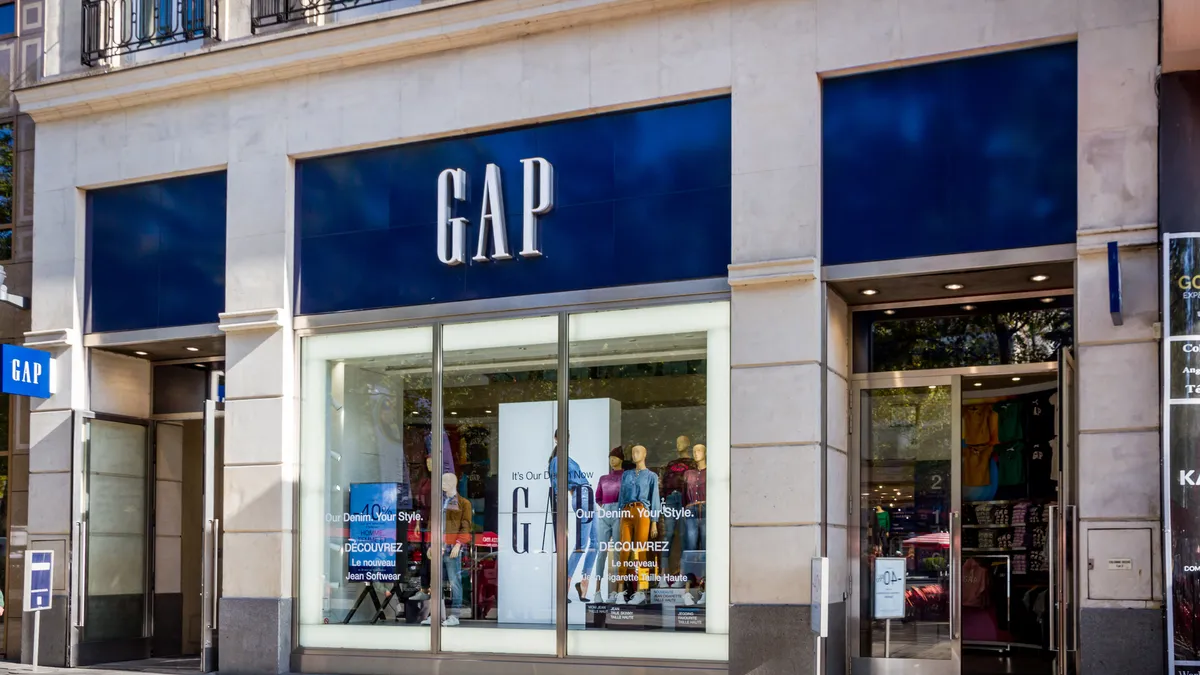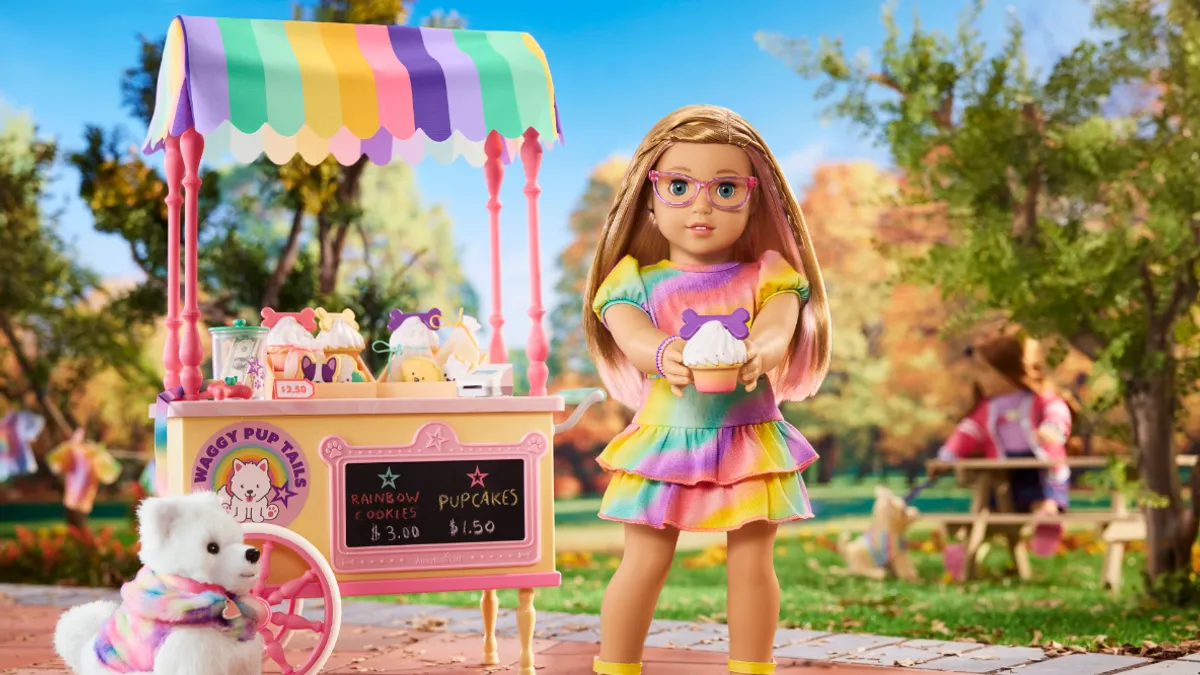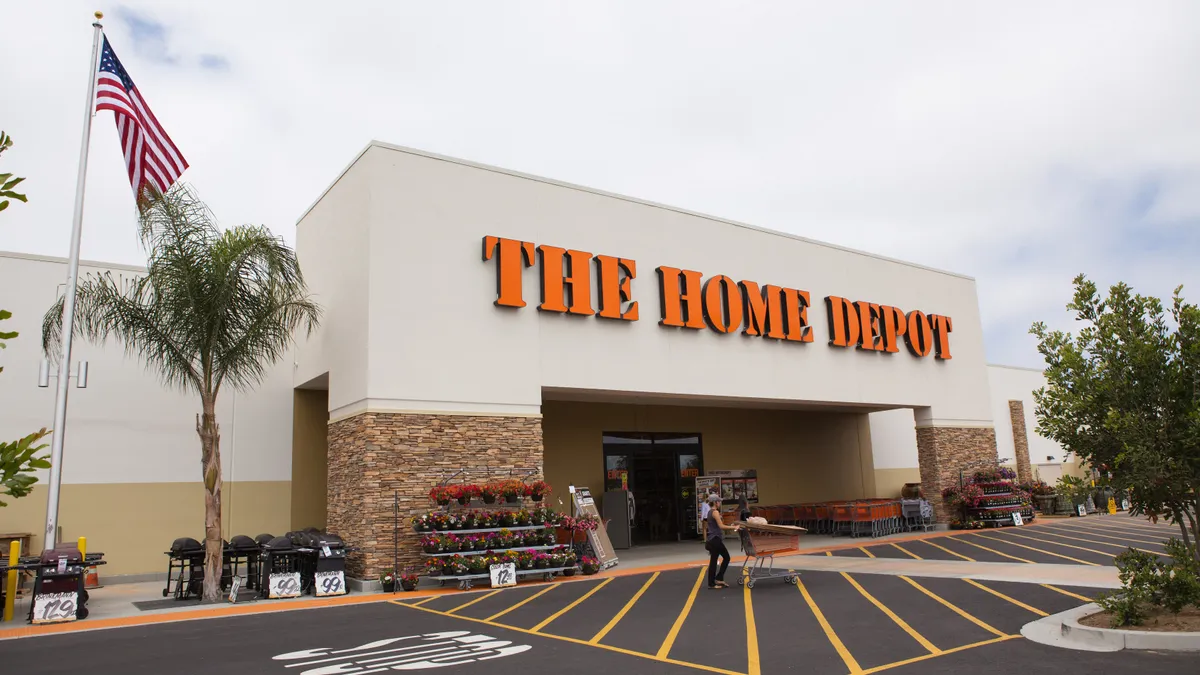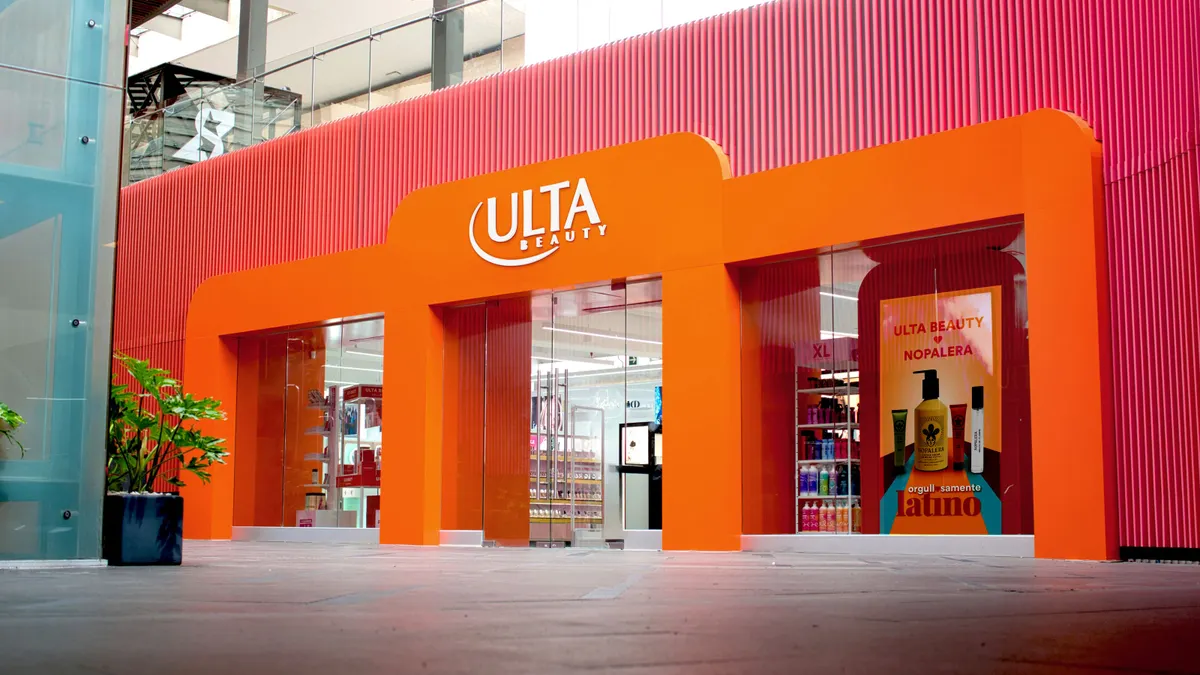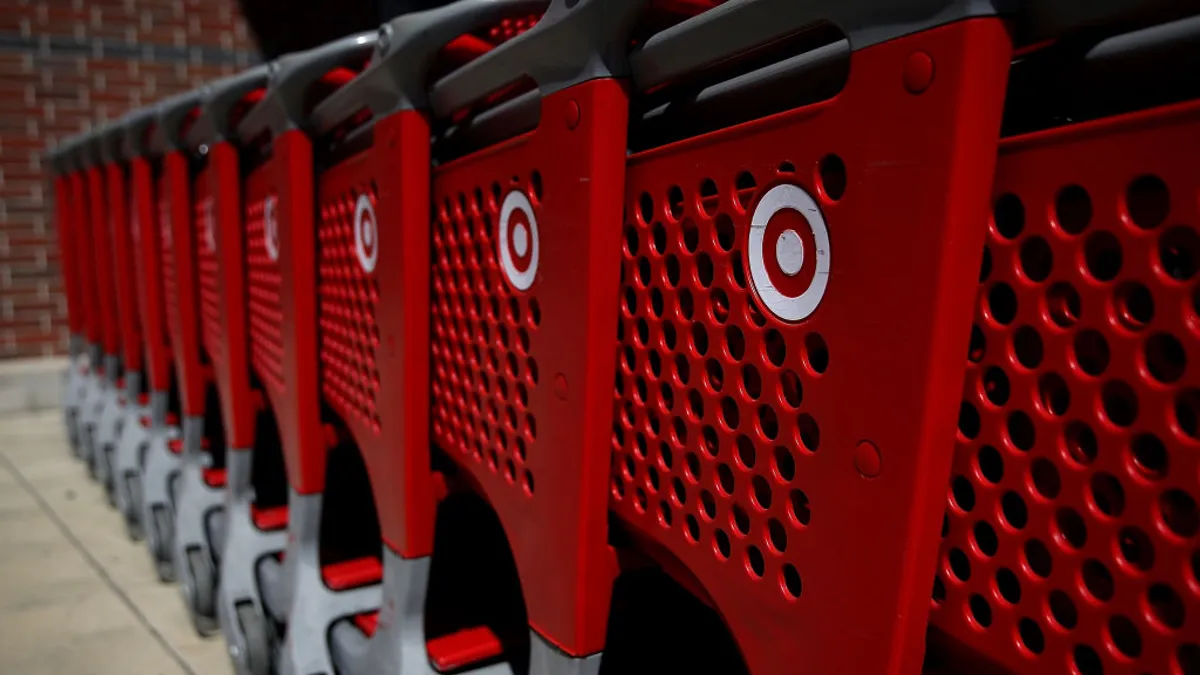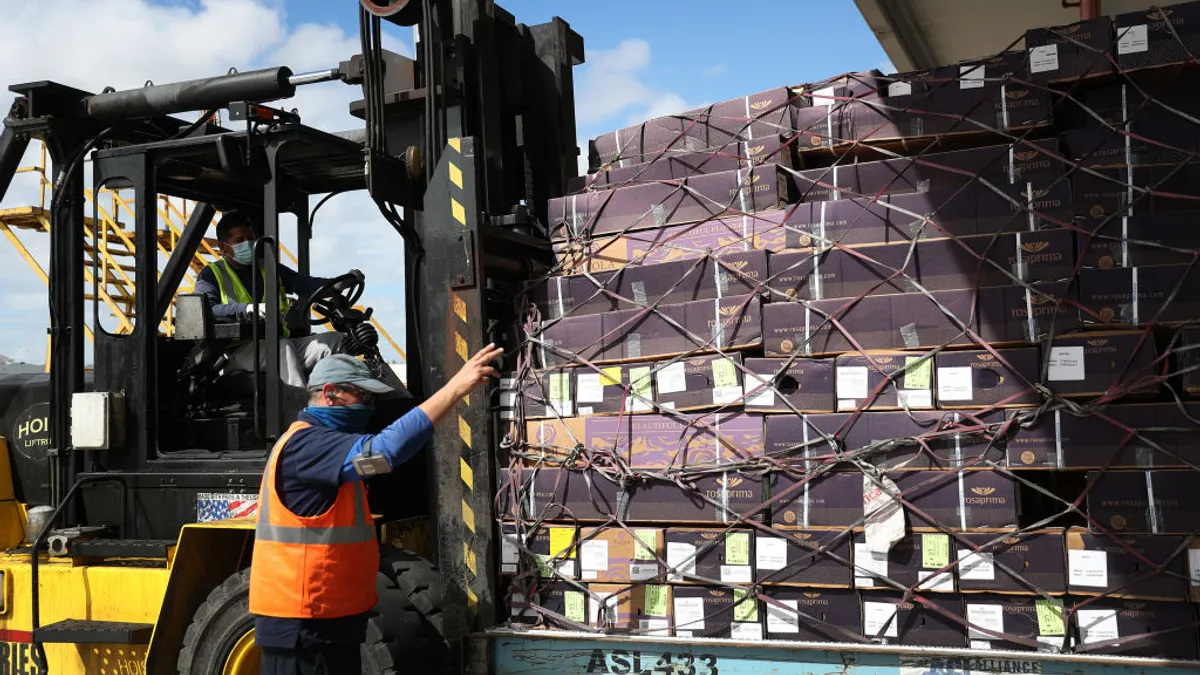Across much of the retail world, relief from last year's declines and financial uncertainty is here. The speed of the recovery has been quicker than many expected going into the year. In even the hardest hit sectors, including apparel and department stores, many players have closed much of the gap between today and their pre-pandemic performance, if not surpassed it.
The reasons for that are not complicated. The large majority of adults in the U.S. are at least partially vaccinated against COVID-19, meaning they are ready to return to stores and refresh their wardrobes. And many have extra cash to spend, thanks to stimulus and money saved from avoiding experiential activities like restaurants and vacations.
But no retailer has recovered in the same way or at the same pace, and for a lot of the retail world the years leading up to the pandemic were marked by declining sales and profit trajectories. Many, especially the mall-based, went into the pandemic with weak operating and financial profiles.
The pandemic exacerbated the vulnerabilities of retailers on the edge — leading to dozens of chain store bankruptcies — and hit even relatively healthy retailers like a meteor. Last summer, Retail Dive looked at those that had taken some of the heaviest hits using data from RapidRatings, which assigns companies scores on short-term and medium-term health based on a series of financial and operating metrics.
We checked in again earlier this year to see which industry players still showed underlying weaknesses. These included companies that had low scores on RapidRatings's Financial Health Rating, which measures short-term resiliency and default risk based on liquidity, leverage, earnings and other metrics.
Since then, several companies who were hit hardest — taking on new debt, losing huge chunks if not most of their sales, and posting massive losses — have regained their footing. Some that appeared on this spring's list of 10 financially weak companies have dropped off after a strong Q2.
Rebounders
| Company | Financial Health Rating (1-100) | Change in rating from 2020 year-end |
|---|---|---|
| Destination XL | 85 | +63 |
| Burlington | 83 | +45 |
| The Children's Place | 76 | +55 |
| Macy's | 62 | +36 |
| GameStop | 44 | +12 |
Source: RapidRatings
Take Nordstrom. As a mall-based retailer of mostly clothing — much of it for work, occasions and going out — the department store chain was particularly jolted by the pandemic. Sector disruption from COVID-19 cost the retailer nearly $5 billion in top-line sales in 2020. The sales declines led to a $690 million loss, compared to nearly half a billion dollars in net income in 2019.
In Q2 of this year, Nordstrom more than doubled its sales from the same period last year (though sales still fell short of 2019 levels), and the retailer swung to a profit. Macy's shares a similarly happy story. Last year, the retailer reportedly hired Kirkland & Ellis as advisers, sparking some bankruptcy speculation around the company given the law firm's prolific work on retail Chapter 11s. This year, the retailer is surpassing 2019 sales in Q2 and de-leveraging its balance sheet after taking on new debt in 2020.
Or consider Destination XL. Cancelled weddings, work from home, sweatpants — some of the defining trends of 2020 caused particular pain for the men's big-and-tall apparel retailer, which lost nearly a third of its sales during the year.
In Q2, sales were up 81.3% from last year, and net income totaled $24.5 million. CEO Harvey Kanter said in a statement that the results "far surpassed" the executives' expectations. The chief executive also pointed to the company's operational and financial strengths.
"We have made substantial reductions in promotions as part of our brand repositioning, which is driving the improvement in gross margin," Kanter said. "We have restructured over one-third of our store lease portfolio which is driving occupancy leverage. And lastly, we have preserved many of the cost savings initiated during the pandemic to reduce our corporate and supporting overhead."
Destination XL is also an example James Gellert, chairman and CEO of RapidRatings, pointed to of how companies hit by the pandemic have been able to raise capital to bolster their positions.
While good news, all those companies had a lot of room to improve their ratings. "A company that goes from being extremely unprofitable to being very profitable, that is going to get a significant boost," Gellert said. "So in some respect for these companies, the fact that they've jumped so much is, in part, a function of how far they fell."
The road ahead for the industry is destined to be as smooth as it has been over the last few months. Retail was tough before COVID-19, and it will remain tough — and perhaps it will get tougher, should pent-up demand and stimulus wind down.
"One quarter does not make a recovery," Gellert said. "You've got the question of who's suffering from secular change, or systemic change, and who's suffering from the idiosyncratic change of the COVID crisis."
Even companies that have experienced strong revenue growth this year show vulnerabilities in their ability to generate cash or sales from their business or from their capital structure and debt load. To give us a look at who is still showing weakness, RapidRatings again provided Retail Dive with a list of companies that carry low FHR scores.
The financially weak
| Company | Financial Health Rating (1-100) | Change in rating from 2020 year-end |
|---|---|---|
| J. Jill | 19 | +2 |
| Express Inc. | 23 | -2 |
| Tuesday Morning | 26 | -27 |
| Party City | 26 | +9 |
| Rite Aid | 32 | +5 |
| The RealReal | 34 | -5 |
| Farfetch | 36 | -2 |
| Chico's | 39 | +13 |
Source: RapidRatings
Here is a look at who made the list this time around:
New to the list
J. Jill
Women's apparel retailer J. Jill sidestepped bankruptcy last year thanks to a deal with lenders following a forbearance on its loan. The out-of-court deal added liquidity and financial flexibility, and bought it a "covenant" holiday through Q4 of 2021, J. Jill said at the time.
The company's sales have come roaring back this year, but sales still lag far behind 2019 levels. Net income remained negative in J. Jill's most recent reporting period, widening from the year-ago period. After the first quarter, CEO Claire Spofford told analysts that the retailer has been more disciplined with inventory, making for better margins as J. Jill sells more clothes at full price.
"While traffic continues to recover, our customer is showing us she's really excited to shop with us in stores and online," Spofford said, according to a Seeking Alpha transcript. "We saw great response to our product assortments this spring. Customers, both existing and new, are really engaging with us and are reacting to our great wear-now offering."
Chico's
As with much of the apparel world, Chico's had a turbulent year last year. It hired a new CEO, declared bankruptcy in Canada and racked up a $360.1 million net loss. This year, the clothing seller has an activist flanking it while it tries to execute on a turnaround plan and digital transformation.
In Q2, Chico's posted its best earnings performance since 2013 and sales growth of over 50%, with "exceptional" sales growth within its Soma unit. But sales still lag 2019 levels, and the years before the pandemic were marked by sales declines and fluctuating profits. This year, the company is facing supply chain hiccups, including shipping delays, freight increases and manufacturing issues caused by COVID-19 outbreaks, including in Vietnam, executives told analysts, according to a Seeking Alpha transcript.
Tuesday Morning
Off-pricer Tuesday Morning survived a bankruptcy last year. As with most of the Chapter 11 filings from 2020, the retailer pointed to the pandemic as the cause of its travails. And without an e-commerce presence, the retailer was especially vulnerable to store closures and COVID-wary customers. Yet it struggled to grow its sales prior to the pandemic as it tried to compete in a space with giants like TJX Cos. and Ross Stores.
By February, just a couple months after exiting bankruptcy, Tuesday Morning was on S&P Global Market Intelligence's list of most vulnerable publicly traded retailers. In its most recent quarter, the retailer nudged its top line up while significantly shrinking its net loss.
As it tries to build a post-bankruptcy future, Tuesday Morning has tapped former executives from off-price peer Burlington Stores. In releasing its most recent results, the retailer also announced more executive shuffling.
"Tuesday Morning Corporation has had a precipitous drop—in this case contrary to the pops that other retailers have seen as consumer spending recovered in the late spring and into the summer," Gellert said. "While, as a discount home retailer, one might assume they would pick up steam in the pandemic era, it appears that they have lost market share to their biggest competitors like Ross and TJX."
Still on the list
Express
In the second quarter, Express sales bounced back by 86% from last year's harrowing sales declines, and the company swung to a profit, though it is still in the red for the year so far. CEO Tim Baxter noted in a press release that the company returned to positive EBITDA earlier than expected and had positive operating cash flow in Q2.
The company is still trailing its performance from 2019, a year that marked a sales decline that had nothing to do with the pandemic and other bugaboos. Express was in a mall sector that was struggling to retain customers and sales before COVID-19. While traffic has improved, there is still uncertainty about the fate of the sector.
Party City
Party City has made much headway from woeful early periods of the pandemic, which hit the retailer particularly hard given most of its business is built on social gatherings — precisely what people have been avoiding since late March of 2020. Q2 sales more than doubled from last year. For the first half of 2021, the party goods and Halloween specialist brought in nearly $61.9 million in operating income, compared to an eye-watering operating loss of $738.2 million during the same period last year.
But, as with so many of the retailers on this list, sales and profits are still far short of where they were in 2019, and those figures weren't exactly booming in pre-pandemic times. As it heads into the back half of the year, Party City is planning to ramp its Halloween pop-ups back up after scaling back dramatically last year, but the number is still less than half of what it opened pre-pandemic. The delta variant's impact on social gatherings is yet another spot of uncertainty for Party City.
Rite Aid
Rite Aid has long struggled financially as it plays third fiddle to drugstore giants Walgreens and CVS. Last year brought nearly 10% growth in revenue, after the preceding years of middling top-line increases. Net profits also improved, but they remained negative with a $100.1 million loss.
The company hasn't logged an operating profit since 2016. In the company's most recent quarter it managed to shrink its operating loss from the turbulent period that ended at the end of last May, but it still remained negative at $13.1 million, while Rite Aid paid out more than $49 million in interest expenses for the same period.
Farfetch
Online luxury platform Farfetch's revenue has more than quadrupled since 2017, while operating losses grew by even more during that time. In 2020, operating loss hit nearly $620 million. Revenue in Q2 rose 43% year over year to $523 million, but operating losses once again grew, reaching $150.3 million. According to RapidRatings data, the company's ratio of post-tax profit to sales earlier this year was just 1%.
The company has grown its active customer base, to nearly 3.4 million, as well as the average order value on its ticket. Founder and CEO José Neves said of Q2 that the luxury industry is "already back to growth with even stronger fundamentals." Analysts with Cowen led by Oliver Chen still see reason for optimism in the long run. "Robust full price selling is a strong positive for the long-term with respect to acquiring quality customers and inspiring brands to supply and partner with the platform," the analysts said.
The RealReal
Luxury resale marketplace The RealReal was especially vulnerable to the pandemic as the apparel category fell overall and the global spread of a virus weighed on consumers' appetite for used clothing in the early months of the crisis.
The RealReal's sales came bouncing back in Q2, with its quarterly gross merchandise volume up 91% year over year and up 53% compared to the same period in 2019. Revenue for the period missed analyst expectations, according to B. Riley Securities' Susan Anderson. Operating losses for the quarter and the first half of 2021 have also grown significantly.
During the quarter, The RealReal added more neighborhood stores, which Anderson's team thinks "will play a key role in driving [The RealReal]'s growth longer-term due to helping unlock supply and driving higher buyer spend." The company also resumed its in-home concierge appointments.









